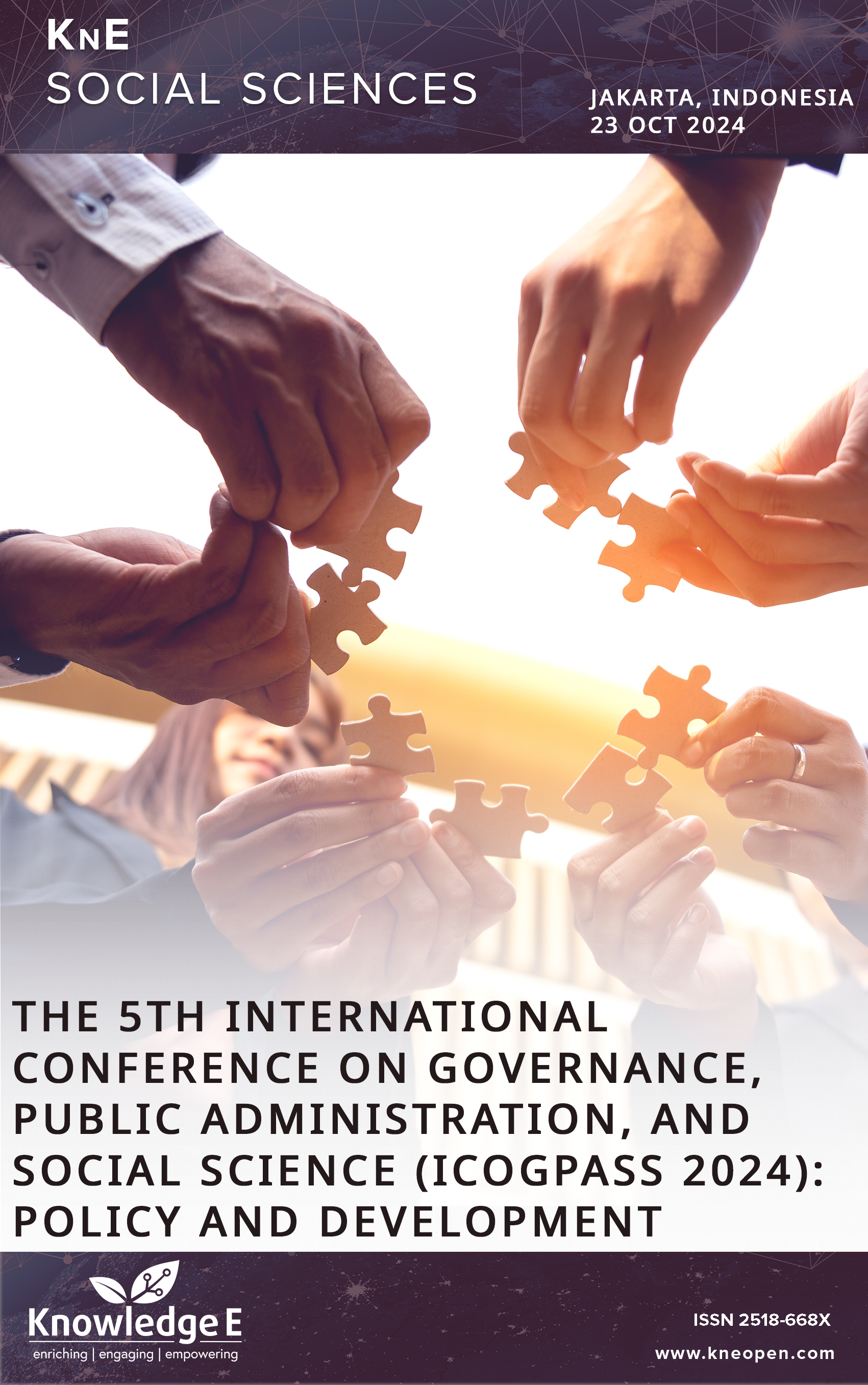Protection of Geographical Indications of Local Indonesian Products from the Perspective of World Intellectual Property Organization
DOI:
https://doi.org/10.18502/kss.v10i15.19216Keywords:
intellectual property, indigenous peoples, cultural heritage, traditional knowledge, batikAbstract
This research explores the development of innovative traditional knowledge aimed at addressing the intellectual property (IP) rights of indigenous peoples and local communities. As a regional initiative, supported by the World Intellectual Property Organization (WIPO) and its partners, it seeks to empower these communities in documenting, digitizing, and managing their cultural heritage on their own terms. Licensing and labelling frameworks are introduced to cater to the specific access and management requirements of indigenous, local, and traditional communities, offering standardized procedures and cultural heritage models. From a cultural research perspective, the study highlights batik as a representation of Indonesia’s cultural identity, emphasizing its ancestral significance and unique characteristics that distinguish it from other cultures. Using a normative, literature-based research method, this study underscores the importance of IP protection for the growth of Indonesia’s economy and the preservation of its cultural diversity. By safeguarding traditional knowledge and geographical indications, Indonesia can bolster its global economic and cultural standing. WIPO plays a pivotal role in this process, administering 24 treaties and fostering international cooperation to protect IP rights while promoting cultural and economic development worldwide.
References
[1] BPK RI, “Regulation of law No.20 of 2016 on trademarks and geographical indications,” Database JDIH BPK.
[2] Afni Nur Fadilah, Arinda Risna Cherylia Siregar, Maniar Nainggolan, Sri Yunita. Legal Protection of Indonesian Batik Cultural Heritage Copyright in View of International Law. State University of Medan. Vol. 3 No. 5: Innovative: Journal of Social Science Research, 2023.
[3] Yunita S, Ginting CA, Naila MA, Ardi M. Analysis of Students’ Understanding of Archipelago Insight (Geopolitics) and its Relationship with love for the Country in the Era of Globalization. Journal of Social Science Research. 2024;4(2).
[4] Directorate General of Intellectual Property. Geographical Indications https://youtu.be/D2QP_FOBGIM
[5] Nurhalimah S. Intellectual Property Rights in Indonesia. Bulletin of Law & Justice. 2017;1 no. 6c.
[6] Mutiasari T. Indonesia Highlights Commitment to Supporting WIPO work Programs. Antara News; 2024.
[7] Rahmatullah I. Protection of Geographical Indications in Intellectual Property Rights Throught Retification of the Lisbon Treaty. Journal Cita Hukum. 2014;2(2).
[8] Kroese WT. The Origin of the Wax Block Mold on the West African Coast. Hengelo: Smit. ISBN 9062895018, 1976.
[9] Patji AR. “Development and Protection of Regional Cultural Property: The Indonesian Goverment’s Response to Claims by Other Parties.,” Center for Research on Society and Culture. Indonesian Institute of Sciences (PMB-LIPI), vol. 12, no. 3, 2010.
[10] Novianti I. Structured Inventory of Traditional Cultural Expressions as an Effort to Protect Traditional Knowledge. Faculty of Law; 2015.
[11] Eng M. Dr. IR. H. Syarif Burhanuddin, Optimizing the Implementation of the Regional Spatial Plan to improve the relationship between the government and local governments in the framework of the integrity of the Republic of Indonesia., Work Paper., vol. PPSA XVIII 7-2012. Indonesia: Lemhanas RI; 2012.
[12] Directorate General of Intellectual Property (DJKI). Government Regulation No.51 of 2007 on Geographical Indications. concerning Geographical Indications. Procedures for Application, Examination, and Settlement of Appeals at the Trademark Appeal Commission. BPK RI; 2007.
[13] Ardiansyah I. Legal Protection of Intellectual Property Rights Against Traditional Culture in Indonesia. Trias Politika Journal, Riau University, ResearchGate. 2022 Apr;6(1):123–9.
[14] Sekhar Chandra Pawana, Erico L Hutahuruk. Optimizing the Promotion of Regional Culture through Geographical Indications. Journal of Law Science, 2021.
[15] BPK RI, “Law No.28 of 2014 Concerning Intellectual Property Rights.,” Jakarta, Oct. 2014.
[16] Alinda Hardiantoro, Rizal Setyo Nugroho. Today in History: Batik Designated as World Cultural Heritage. Kompas Editorial Team, Kompas.com, 2022.
[17] Silvana and Kurnia Muhajarah. “Diving into the Beauty and Wealth of Indonesian Local Culture: Love and Care for Local Wisdom.,” Academia.edu, p. 11, 2023.
[18] Ministry of Law and Human Rights of Bangka Belitung Islands. Indonesia Committed to supporting WIPO Work Program & active in global initiatives related to IP, 2024.
[19] Fathoni, “Legal Paradigm of Justice in Communal Intellectual Property Rights,”. Journal of Legal Cita. 2014;2(2).
[20] Jewell C. Publications Division, WIPO Magazine. Capitalizing on Indonesia’s Creative Economy; 2019.
[21] Fabiola Febrianastri and Restu Fadilah, “From coffee to songket: this is a complete list of Indonesia’s leading geographical indication products.,” Suara.com, Jun. 12, 2024.
[22] Riza Cadizza, Rizanizarli. Legal Protection of Geographical Indications of Gayo Coffee in Gayo Land. Faculty of Law. Muhammadiyah University of Luwuk. Yustisiabel Journal. Volume 7 Number 2, 2023.
[23] Widhi Luthfi, “Indonesia has 750 regional languages verified by the ministry of education and cultures.,” Goodnewsfromindonesia.id, Oct. 19, 2021.
[24] IWM Public Relations Coverage of the Directorate General of Intellectual Property. DJKI Holds Finalization of the National Geographical Indication (GI). Road Map; 2024.
Published
How to Cite
Issue
Section
License
Copyright (c) 2025 Ussy Gina Sabrina, Rindri Andewi Gati

This work is licensed under a Creative Commons Attribution 4.0 International License.

